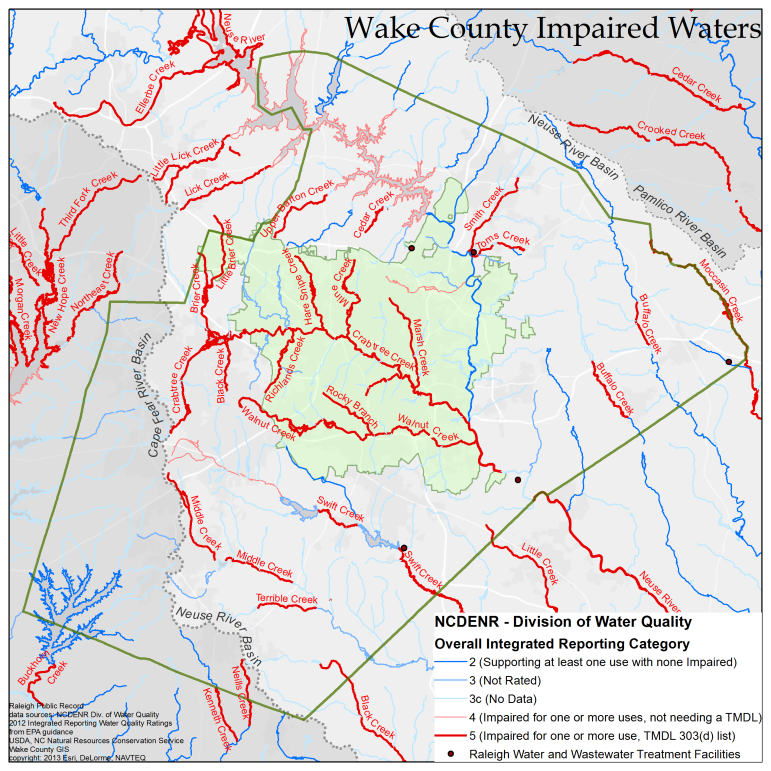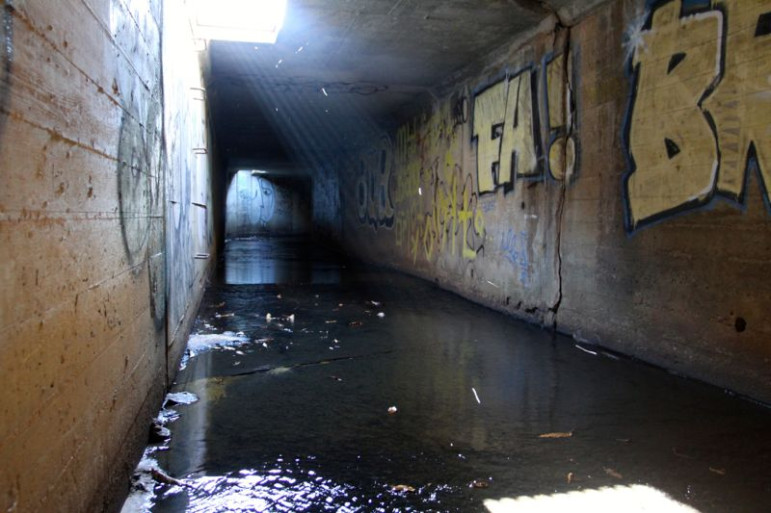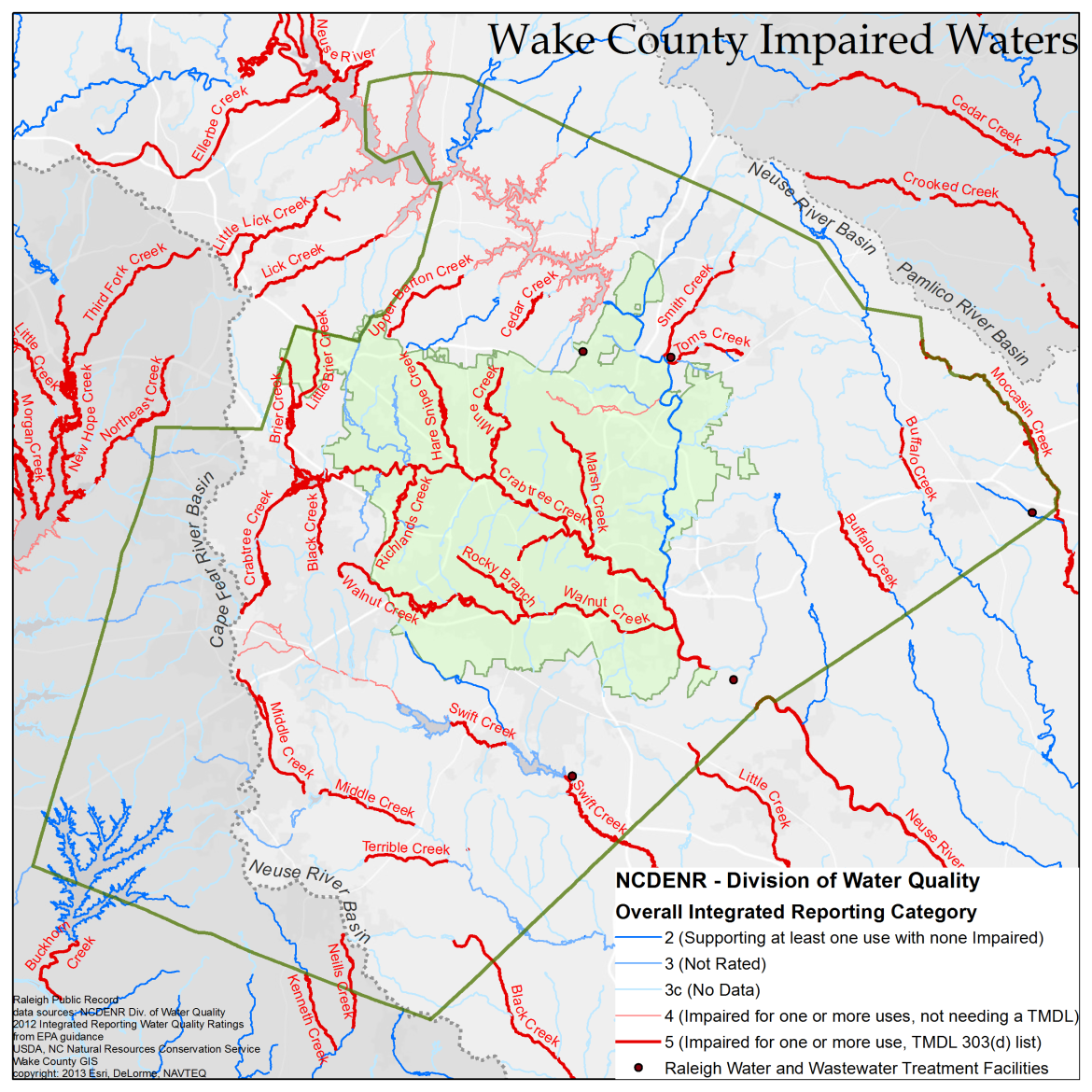Six rivers in the Upper Neuse river basin are slated to join the state’s list of polluted streams, due to the Environmental Protection Agency April 1. The list, known as the 303d list, includes all streams that have failed water quality standards and do not yet have a cleanup plan.
This map shows streams with problems in red. The lightest blue streams have not been tested by the state. Click for larger view.

The state has sampled fewer than one-third of the nearly 13,000 streams in North Carolina, according to Cam McNutt, environmental technician with the state Department of Environment and Natural Resources. The EPA does not require a complete inventory.
DENR, he said, is focused on streams with point source discharges, such as wastewater treatment plant, and streams where they have access. County and city governments may test streams within their jurisdiction, as Raleigh does.
Every stream monitored under Raleigh’s volunteer monitoring program has tested positive for water quality problems, including bacteria potentially from human, pet, and wildlife feces or leaky sewer pipes.
Urban Streams
Urban streams across the nation fail water quality assessments.
“Streams draining downtown Raleigh are probably not in very good shape and probably haven’t been since the city was built,” McNutt said.
The state doesn’t use Raleigh’s data because it does not meet the state’s gathering and testing requirements.

Charles Duncan / Raleigh Public Record
Pigeon House Creek
However, according to the city’s website, the data enables Raleigh to respond when a problem is detected such as high bacteria levels, which could indicate a sewer leak.
Upper Neuse Riverkeeper Mathew Starr said there have been some successes.
“In pictures from 10 years ago [Rocky Branch Creek] looked terrible. It was degraded. The state has done, and City of Raleigh, some excellent work,” he said. “It is a good example of how we can improve our urban waterways.”
While Wake County tests local beaches and drinking water wells, testing does not include its streams. Melinda Clark, stormwater programs manager for Wake County, said, “It is a state responsibility. It is a huge effort.”
Next Steps
Governments and nonprofits use the 303d list to prioritize streams for protection and restoration.
“One thing that is looked at in prioritizing stream corridors is level of impairment,” Clark said. “And we can use it to protect high-quality water sources.”
Rivers are removed from the list if the problem is resolved or if a plan to fix the problem is implemented.
Plans may target a pollutant, such as nitrogen, for reduction. That type of plan is called a total maximum daily load, but may take years to fix water quality issues.
Streams with aquatic life problems, McNutt said, may “lack good habitat and experience hydrological overload—very heavy storm loads that scour the stream and remove habitat.”
Rain-related problems are reduced by preventing the rapid increase in water volume—reducing the amount of covered land so soil can absorb rain water or harvesting rainwater in barrels and cisterns.
This year, six rivers in the upper Neuse River Basin were added for aquatic life, dissolved oxygen, or fish community problems.
Public comments on the 303d list are being accepted through March 14.
